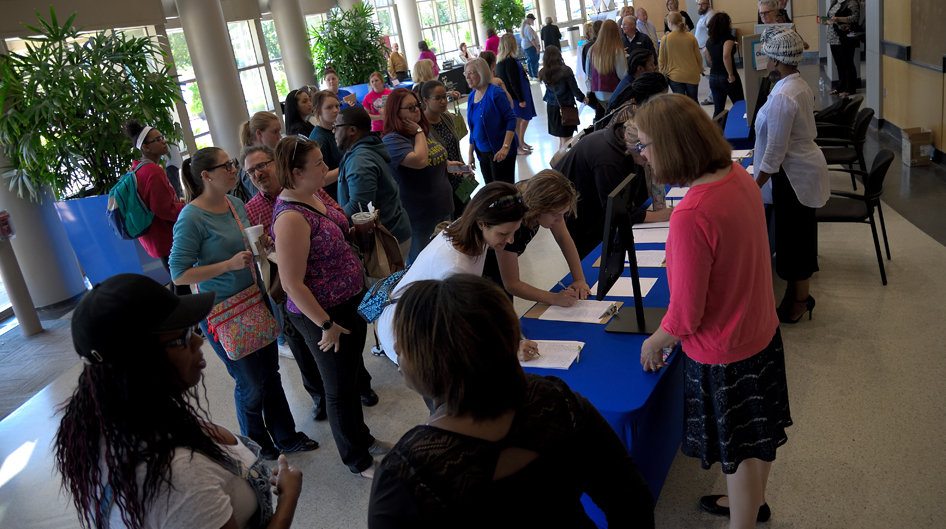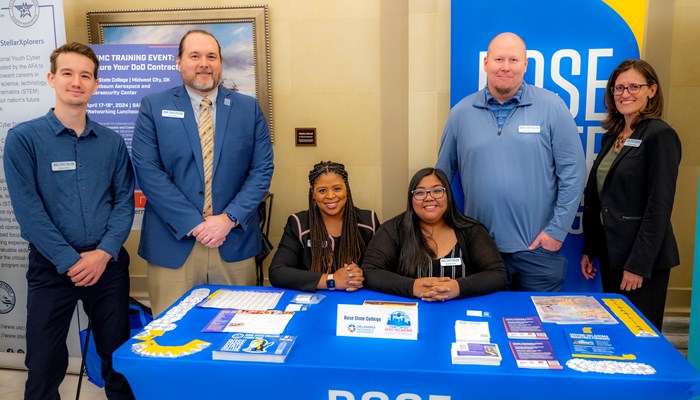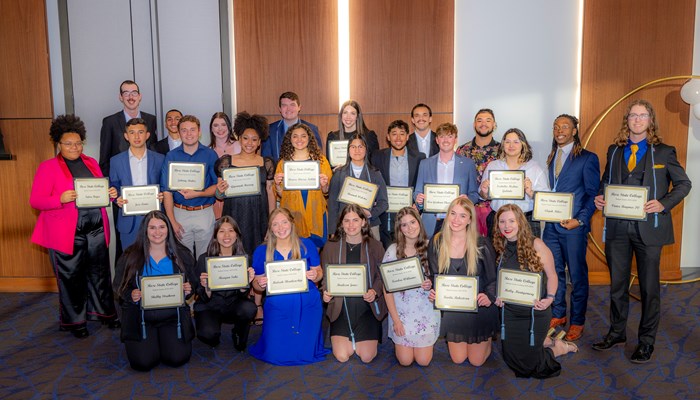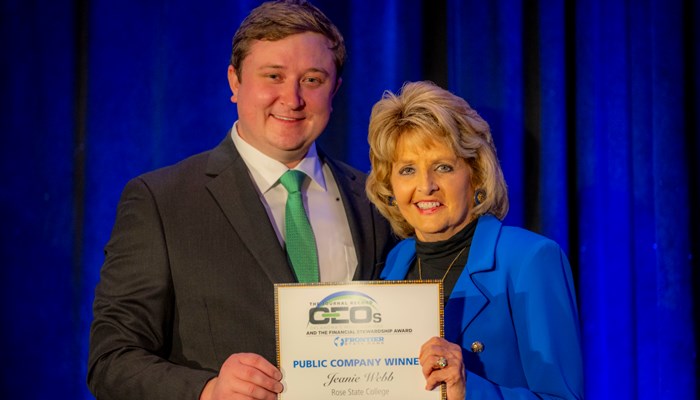Rose State Professors Educate Students, Community on Lifelong Impact of Adverse Childhood Experiences Published December 19, 2018
When it comes to childhood trauma – experiencing physical, sexual, and emotional abuse, witnessing domestic violence, or seeing a parent plucked out of a home and incarcerated – the mind may forget those experiences, but the body remembers forever.
Those Adverse Childhood Experiences (ACEs), whether long forgotten or ever-present in the adult mind, cause distress to the body years into adulthood, influencing how we think, act, and form relationships. What’s more? They can lead to chronic disease, substance abuse, incarceration, and a shortened life expectancy.
A 1997 study first unveiled these findings about ACEs and coined the term. Now, after two decades and great strides in research, two Rose State College early care and education professors are on a mission to not only educate their students about ACEs and the impact they have throughout adulthood, but help those students identify ACEs in their own classrooms upon graduation. That way, those educators can connect their young students and their families to resources and stem more life-impacting damage.
“What they found in this study is if a person has four or more ACEs, long-term health outcomes are going to drastically look different: cardiovascular disease, cancer, heart disease, diabetes, any chronic health disease,” said Kristin Hommel-Miller, who co-leads ACEs work at Rose State with Joetta Gatliff. Both professors are faculty in the Social Sciences division.
The focus is especially important in Oklahoma as the state ranks third nationally for number of ACEs, with children averaging four ACEs each.
“Teachers spend eight to 10 hours a day with their students, so if we’re really aware of ACEs and we start looking at behavior differently, we may be able to stop some of the damage before it gets to No. 4,” Gatliff said.
ACEs study
The ACEs study is one of the largest scientific research studies of its kind, with over 17,000 mostly middle-income Americans participating. Backed by Kaiser Permanente and the Centers for Disease Control and Prevention, the study analyzes the relationship between childhood trauma and the risk for physical and mental illness in adulthood.
The study measured 10 types of trauma centering on physical abuse, verbal abuse, sexual abuse, physical neglect, emotional neglect, parents addicted to drugs or alcohol, domestic violence, mental illness, and disappearance of a parent due to imprisonment or divorce. The study used a simple scoring method to determine the extent of each study participant’s exposure to childhood trauma. Exposure to one category (not incident) of an ACE qualified as one point.
When the points are added up, the ACE Score is determined.
“An ACE could also be if there’s a lack of food or a lack of somebody to take care of them, for somebody to take you to the doctor, or take care of you when you have a need,” Gatliff said. “Children can suffer an adverse experience, but a lot of times they have a loving parent who will pick them up and help them through it. If you’re in the state of Oklahoma, where we have an average of four ACEs, when our parents see their children suffering an Adverse Childhood Experience, they may not know what to do to be that protective factor.”
ACEs research posits that a 9-month-old could never remember being sexually abused, but that abuse irreparably alters the biochemistry of the body. When the study came out in 1997, those kinds of findings were met with great skepticism among medical and academic professionals, Hommel-Miller said.
“The first couple researchers who presented it were mocked, for a little while until doctors really grabbed hold of the research, and now you have medical doctors screening for ACEs,” she said.
 “Resilience”
“Resilience”
Both professors have incorporated lessons on ACEs into their classrooms, and when students take the 10-point online quiz to discover how many ACEs they have, the students begin to confide in their professors about their childhoods. Gatliff and Hommel-Miller recall a student who lived on couches for a year in high school, and another two who were kicked out of their childhood homes because their parents didn’t want them.
So, how do you recognize you’re interacting with someone who might have one or several ACEs in order to tailor your behavior and communication to their needs, and set them up with the proper resources?
“You develop relationships with people. And I think most students who come here to Rose State have a story to tell. Then it comes down to whether you, as a professor, take the time to listen and connect the student to the proper resources.” Hommel-Miller said.
In an elementary school, the young students may not disclose those experiences; instead, a parent might reveal to the teacher current adverse circumstances inside their home or experiences the student might have suffered.
Hommel-Miller and Gatliff didn’t stop with ACEs education within their classrooms; they spearheaded the effort to screen the film “Resilience: The Biology of Stress & the Science of Hope” for the Rose State and Midwest City communities. It was at a Potts Family Foundation luncheon that the two first learned about the film.
Because of Hommel-Miller and Gatliff, Rose State was the first location in the metropolitan area to host the film – a one-hour documentary that dives into the sciences of ACEs – in the fall of 2017. The film, a winner at the Carmel International Film Festival in 2016, showcases interviews with experts and practitioners who believe what’s predictable is preventable. And with that knowledge, they’re preparing to help the next generation break the cycles of adversity and disease.
With Gatliff as moderator, a panel of experts, including District Attorney David Prater, talked about what ACEs look like in Oklahoma and the effect they have on the state’s incarceration rate (Oklahoma now has the highest in the U.S., according to Prison Policy Initiative).
“His big takeaway was that if we want to start changing that incarceration rate, we need to start changing it early on,” Hommel-Miller said.
During the two Rose State screenings, nearly 750 people total watched as doctors and other experts shared staggering statistics about the effects of ACEs. Those include:
- 28 percent of children have experienced physical abuse
- 27 percent of children have experienced substance abuse
- 13 percent of children have experienced domestic violence
- 20 percent of children have experienced sexual abuse
- ACEs can lead to heart disease, lung disease, liver disease, and cancer
- ACEs double someone’s chances of developing heart disease
- ACEs triple someone’s chances of suffering from depression
- The life expectancy of someone with ACEs is 20 years lower
Community education
To help educate the community about ACEs, the professors were awarded a $1,000 grant from the Potts Family Foundation, an Oklahoma-based nonprofit that aims to address root causes of early childhood neglect. Thanks to the grant, Rose State can host six free Saturday workshops, leading groups of 35 to 40 area people who work directly with children and families. The three-hour workshops will take place from 10 a.m. to 1 p.m. Jan. 12, Feb. 9, March 9, April 13, May 11, and June 8.
The upcoming workshops will focus on comprehensive ACEs training, and each participant will leave armed with Barbara Sorrels’ book, “Reaching & Teaching Children Exposed to Trauma.”
The sessions kick off with attendees watching “Resilience” and taking their own ACEs test. They also will take a pre-test to determine what kinds of resources they currently have to connect children and families to. A post-test will determine how effective the training was and how it can improve for future workshops. Preference with the initial workshops will be given to the dozens of central Oklahoma agencies working with families and children under 5, and later workshops would branch out to the wider Oklahoma community.
“Our goal is to eventually be a hub of training and connecting people to the appropriate resources,” Hommel-Miller said.
Check back on our website for more information about the workshops and when to register.



